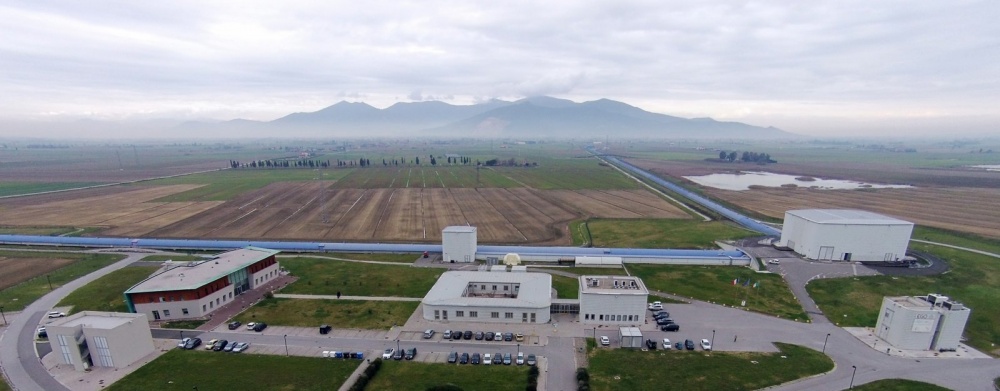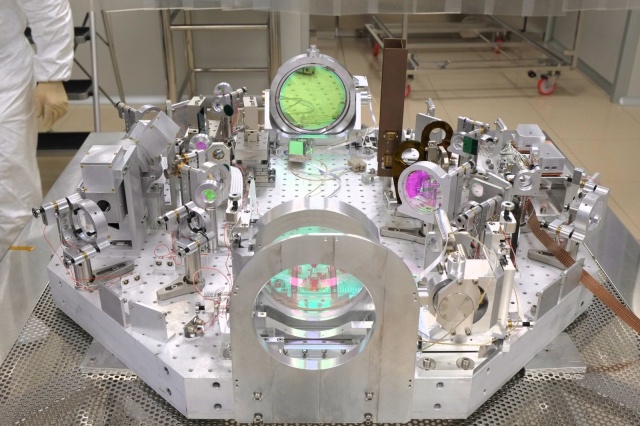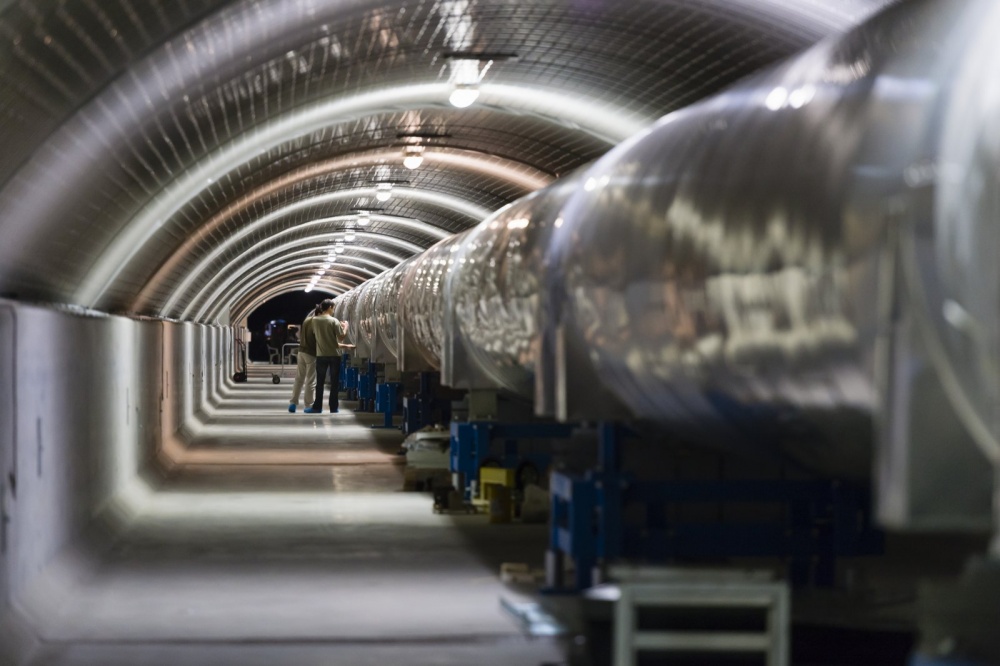Gravitational waves: European detector, Virgo joins research
The development of the European gravitational wave detector, Virgo, has been completed, the European Gravitational Observatory (EGO) announced on 20 February 2017. Virgo is now ready to join the two LIGO detectors already in operation, thus opening new possibilities: in the case of three-in-one discoveries, the location of the event generating gravitational waves can be restricted to a fairly narrow section of the sky, and the detection of gravitational waves can be linked to other astronomical observations.
31 March, 2017 / MÁTYÁS VASÚTH
The announcement marks the end of a transformation period of several years, during which technical improvements necessary for the sensitivity enhancement of the Virgo detector were carried out.
The great discovery
The laser interferometric gravitational wave detectors with arms of several kilometres, the two American LIGOs and the European Virgo began operating in the early 2000s. Virgo was built in Cascina, near Pisa, Italy, with two three-kilometre-long perpendicular vacuum arms. The sensitivity of these first generation observatories was not sufficient for a direct observation of gravitational waves, so following a measurement period of several years, the scientific community decided on the restoration of the detectors.
In autumn 2010 technical improvements for sensitivity enhancement began in the American, and in spring 2011, the European detector. The modifications took years, but the results lived up to the expectations: after their restart in autumn 2015, the enhanced LIGO detectors successfully detected the gravitational waves of two merging black holes.
The wave signal coming from over a billion light years away caused changes of distance on Earth on the order of one-thousandth of a diameter of a nucleus, which was recorded by the sensitive detectors. Thus, a hundred years after Einstein’s prediction, the existence of gravitational waves could be verified through direct observation.
 Virgo from above Source: EGO-Virgo - CC-BY-SA
Virgo from above Source: EGO-Virgo - CC-BY-SAVirgo joins in
The restart of Virgo took a longer time; its enhancements were completed in early 2017. By the end of February all key components had been replaced, and today both arms have a laser light running in a resonant state. The end of the enhancements also marks the beginning of the next active period, that is, the installation of the detector, during which the fine-tuning of components and the filtering of noise sources will lead to the detector reaching its advanced sensitivity.
There is no planned scientific measurement in this period; still, with its increased sensitivity the detector may record useful data. The amount of time required is hard to predict – researchers and engineers usually make restrained statements due to unforeseeable difficulties. According to the plan, in a few months Virgo will join the LIGO detectors in the hunt for gravitational waves.
 Optical bench in the central area of the detector Source: EGO-Virgo - CC-BY-SA
Optical bench in the central area of the detector Source: EGO-Virgo - CC-BY-SAHungarians in the Virgo Collaboration
The Virgo Collaboration is made up of researchers from six countries, including Hungary. The MTA Wigner Research Centre for Physics (formerly: MTA KFKI RMKI) joined the collaboration in 2008. Members of the Virgo team at Wigner are taking part in the development of computing procedures and algorithms used in data analysis, mainly in the application of graphic processors (GPU), and also in the assessment of measured data and the search for signals of massive merging stars, for which they have the research centre’s GPU laboratory and the Wigner Cloud of the Wigner Data Centre at their disposal. When the restart of Virgo was announced, Hungary was represented by researchers from the Wigner Research Centre for Physics, Director General Péter Lévai, and Mátyás Vasúth, leader of the Hungarian Virgo team.
The LIGO team of Eötvös Loránd University (led by Zsolt Frei) and that of the University of Szeged (led by László Árpád) are also participating in the LIGO-Virgo Scientific Collaboration.
 A 3-kilometers-long arm part of the Virgo detector at the European Gravitational Observatory Source: EGO-Virgo - CC-BY-SA
A 3-kilometers-long arm part of the Virgo detector at the European Gravitational Observatory Source: EGO-Virgo - CC-BY-SAHunt for black holes and neutron stars
The direct detection of gravitational waves has created an opportunity for a brand new way of observing the universe, namely, gravitational-wave astronomy. Besides the definition of the wave sources’ parameters, the operation of the third gravitational wave detector, Virgo was essential to be able to locate the sources’ celestial position. With three detectors the possible range of sources can be reduced significantly, from the area of several hundred to less than twenty square degrees.
In 2015, even before the first period of observations, the LIGO-Virgo community concluded collaboration agreements with several astronomical observatories so that the sharing of celestial positions and subsequent electromagnetic observations could be made, based on the detected gravitational signals. Researchers, however, expect to observe such an electromagnetic blaze only in the course of high-energy processes, taking place in the matter of the source itself, or in the surrounding matter.
Apart from the current observation of black holes, another important step will be an analysis of the merging of neutron stars, made possible by the sensitivity enhancement of the detectors. Based on the detected gravitational wave signal, conclusions can be drawn regarding the internal features of neutron stars and the qualities of the matter they contain, by which characteristics of high-energy materials examined in particle accelerators can be verified through gravitational wave observations as well.
